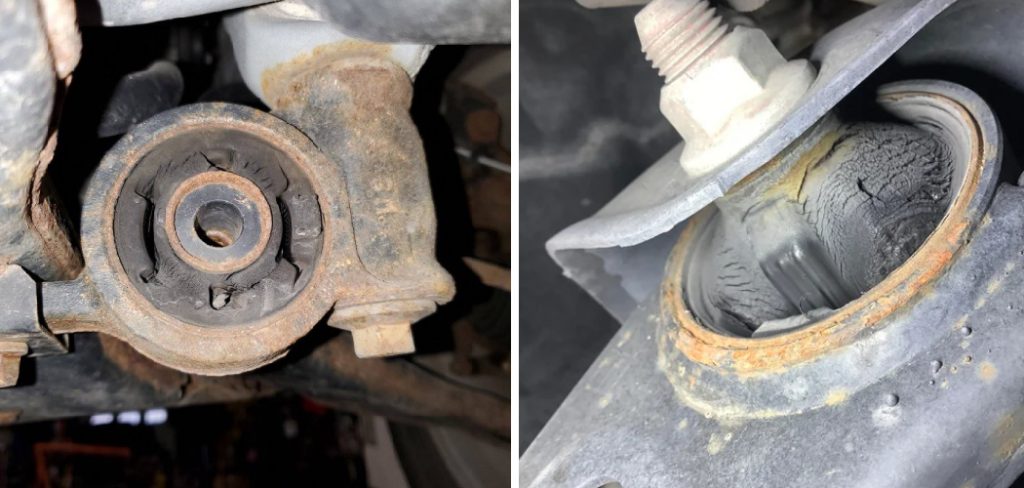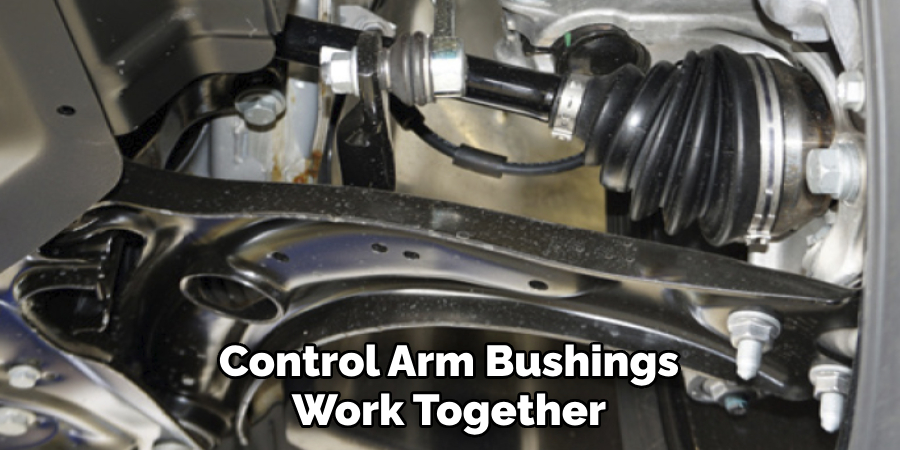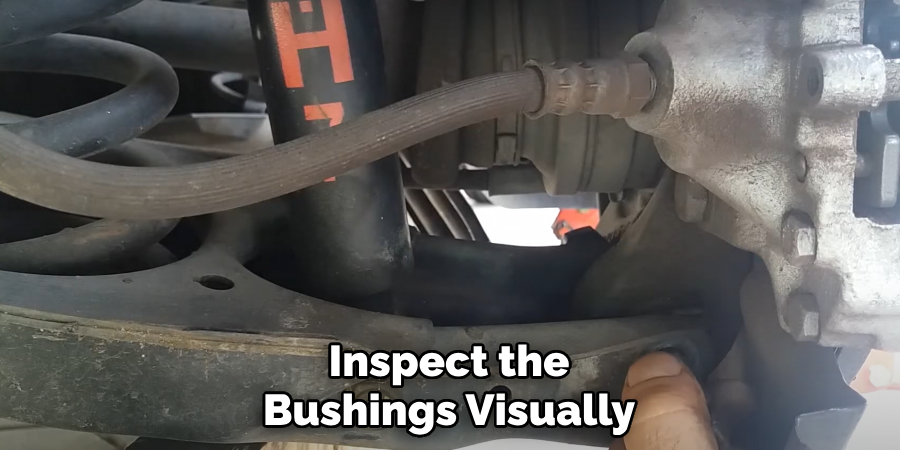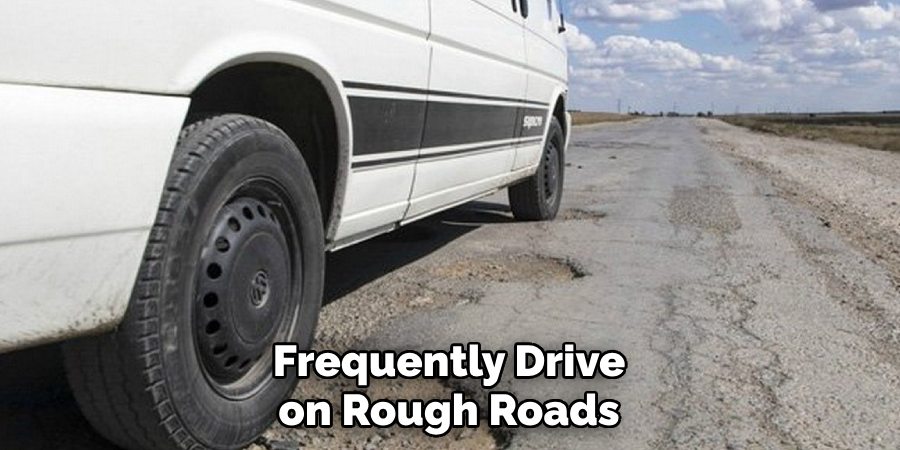Are you tired of feeling every bump and pothole on the road? Do your car’s handling and steering feel loose or unstable? If so, it could be due to worn or damaged control arm bushings. These small but vital components play a crucial role in your vehicle’s suspension system, helping to absorb shocks and vibrations while also providing stability during cornering.

In this blog post, we will teach you how to inspect control arm bushings. Whether you’re a seasoned mechanic or someone who is interested in learning more about their car’s maintenance, our step-by-step guide will give you all the information you need. So buckle up and get ready to become an expert on control arm bushings!
Why is It Important to Inspect Control Arm Bushings? 5 reasons
1 . To Ensure Safety
First and foremost, inspecting your control arm bushings is essential for your safety while driving. As mentioned earlier, these components are responsible for maintaining stability and absorbing shocks from the road. If they are worn or damaged, it can significantly affect your vehicle’s handling and steering, making it unsafe to drive.
2 . To Avoid Costly Repairs
Regularly inspecting your control arm bushings can also help you avoid more expensive repairs down the line. If left unchecked, worn or damaged bushings can cause other components in the suspension system to wear out quickly, leading to a costly overhaul. By catching any issues early on, you can save yourself from having to spend a significant amount of money on repairs.
3 . To Improve Driving Experience
Worn control arm bushings can make your driving experience less enjoyable. You may experience vibrations or rattling while driving, and the car may feel less stable during cornering. By inspecting and replacing any damaged bushings, you can improve your vehicle’s overall performance and comfort on the road.
4 . To Increase Lifespan of Other Suspension Components
Control arm bushings work together with other suspension components to keep your vehicle running smoothly. If these bushings are worn or damaged, they can put additional strain on the rest of the suspension system, causing other components to wear out faster. Regularly inspecting and maintaining control arm bushings can help extend the lifespan of these other parts.

5 . To Save Time
Lastly, regularly inspecting control arm bushings can save you time in the long run. By catching any issues early on, you can address them before they turn into more significant problems that require extensive repairs. This means less time spent at the mechanic and more time enjoying your car on the road.
How to Inspect Control Arm Bushings in 5 Easy Steps
Step 1: Lift and Secure Your Vehicle
To inspect your control arm bushings, you will need to lift your vehicle off the ground. Use a jack to raise the car and secure it with jack stands for safety. Also, make sure to wear appropriate protective gear like gloves and goggles before working on your car.
Step 2: Locate the Control Arm Bushings
Once your vehicle is lifted and secured, locate the control arm bushings. These are usually located near the tires and connect the lower portion of the suspension system to the frame of your car. Refer to your vehicle’s manual if you are having trouble finding them.
Step 3: Check for Visible Damage
Inspect the bushings visually for any signs of wear or damage. Look for cracks, tears, or missing pieces. If you notice any of these issues, it is time to replace your control arm bushings.

Step 4: Test for Wear and Play
To check for wear and play in the bushings, you will need a pry bar or large screwdriver. Place the tool between the control arm and bushing and try to move it up and down. If there is significant movement or play, this indicates that the bushings are worn out and need to be replaced.
Step 5: Check for Wear on Other Suspension Components
Lastly, if you notice significant wear or play in the control arm bushings, it is essential to check for wear on other suspension components as well. The worn bushings may have put additional strain on these parts, and they may need to be replaced as well.
Additional Tips to Inspect Control Arm Bushings
1 . Do Not Ignore Any Signs of Wear
If you notice any symptoms of worn or damaged control arm bushings, it is crucial not to ignore them. Addressing the issue early on can prevent further damage and costly repairs. Also, pay attention to any unusual noises or vibrations while driving, as these can also be signs of worn bushings.
2 . Consider Replacing with Polyurethane Bushings
If you frequently drive on rough roads or are looking for a more durable option, consider replacing your control arm bushings with polyurethane ones. These bushings are made from a sturdier material and can last longer than traditional rubber bushings.

3 . Get a Professional Opinion
If you are unsure about how to inspect your control arm bushings or if you suspect significant damage, it is always best to seek professional help. A mechanic can accurately diagnose any issues and provide recommendations for repairs or replacements.
4 . Inspect Regularly
It is recommended to inspect your control arm bushings every 10,000-15,000 miles or at least once a year. This can help catch any issues early on and prevent them from becoming more significant problems.
5 . Replace in Pairs
If you need to replace your control arm bushings, it is best to replace them in pairs. This ensures that both sides of your vehicle have equally functioning bushings and helps maintain balance and stability while driving.
Frequently Asked Questions
What Precautions Should I Take While Inspecting Control Arm Bushings?
Make sure to wear appropriate protective gear and follow all safety precautions when inspecting your control arm bushings. Always lift and secure your vehicle properly before working on it.
How Long Do Control Arm Bushings Last?
The lifespan of control arm bushings can vary depending on the type of material, driving conditions, and maintenance. On average, they can last anywhere from 50,000-100,000 miles. Also, keep in mind that regular inspections and maintenance can help extend their lifespan.
Can I Replace Control Arm Bushings on My Own?
Inspecting control arm bushings can be done by individuals with some mechanical knowledge and experience. However, if you are unsure or not confident in your abilities, it is best to seek professional help for replacements.
How Much Does it Cost to Replace Control Arm Bushings?
The cost of replacing control arm bushings can vary depending on the make and model of your vehicle, as well as the type of bushings used. On average, it can cost anywhere from $200-$1000 for parts and labor.
Can I Drive with Worn Control Arm Bushings?
It is not recommended to drive with worn or damaged control arm bushings as it can affect the stability and handling of your vehicle. If you suspect issues with your bushings, it is best to have them inspected and replaced if necessary before driving.

Overall, regularly inspecting your control arm bushings is crucial for ensuring a safe and smooth ride. By following these tips and recommendations, you can prolong the lifespan of these crucial suspension components and save yourself time and money in the long run. So, make sure to include inspecting your control arm bushings in your regular car maintenance routine to keep your vehicle running smoothly on the road.
Conclusion
Now you know how to inspect control arm bushings. In conclusion, inspecting your control arm bushings is an essential aspect of maintaining your car’s suspension system. It can help ensure safety, prevent costly repairs, improve driving experience, increase the lifespan of other components, and save time in the long run.
By following these steps and tips, you can keep your control arm bushings in good condition and enjoy a smooth and safe ride every time. Remember to regularly inspect your bushings and address any issues promptly to keep your vehicle running at its best.

Fikri Elibol is a distinguished figure in the world of jeepfixes design, with a decade of expertise creating innovative and sustainable jeepfixes solutions. His professional focus lies in merging traditional craftsmanship with modern manufacturing techniques, fostering designs that are both practical and environmentally conscious. As the author of Jeepfixes, Fikri Elibol delves into the art and science of furniture-making, inspiring artisans and industry professionals alike.
Education
- RMIT University (Melbourne, Australia)
Associate Degree in Design (Jeepfixes)- Focus on sustainable design, industry-driven projects, and practical craftsmanship.
- Gained hands-on experience with traditional and digital manufacturing tools, such as CAD and CNC software.
- Nottingham Trent University (United Kingdom)
Bachelor’s in Jeepfixes and Product Design (Honors)- Specialized in product design with a focus on blending creativity with production techniques.
- Participated in industry projects, working with companies like John Lewis and Vitsoe to gain real-world insights.
Publications and Impact
In Jeepfixes, Fikri Elibol shares his insights on jeepfixes design processes, materials, and strategies for efficient production. His writing bridges the gap between artisan knowledge and modern industry needs, making it a must-read for both budding designers and seasoned professionals.
